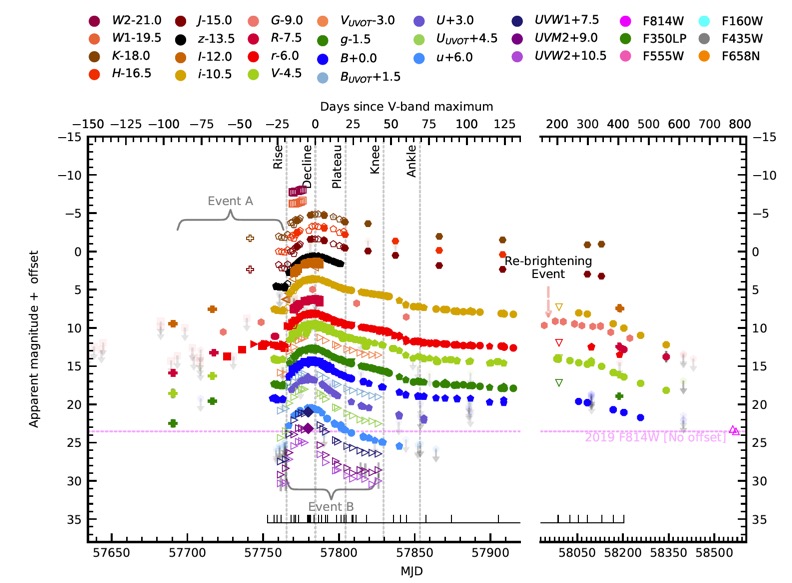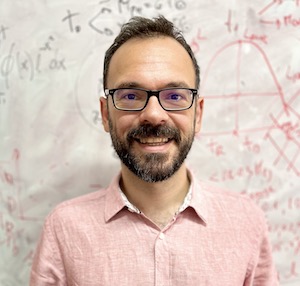by Cosimo Inserra (Cardiff University)

My consortium (the advanced Public ESO Spectroscopic Survey of Transient Objects - ePESSTO+) and I work on supernovae and unusual extragalactic transients such as kilonovae and tidal disruption events. Our survey and its predecessors (PESSTO and ePESSTO) have changed the way we carry out transient science at ESO. A critical aspect of this success is the ideal combination of Opticon RadioNet Pilot (ORP) time for fast and flexible optical photometry combined with the ESO 3.6m NTT optical and NIR spectroscopy.
Our targets are catastrophic events and each day, or even hours when observing kilonovae or fast blue transients (known as FBOTs), carries unique information about the physics and chemical composition of the objects. The possibility given by the ORP is unique as it allows us to apply for time to more than a dozen telescopes all over the world, and hence to always have a telescope pointing at our targets at any time. Thanks to the Las Cumbres Observatory (LCO) time won via the ORP, we have been able to:
- characterise the luminosity evolution of the extremes of the supernova zoo (e.g. McBrien et al. 2020, ApJL, 885, 23 - Prentice et al. 2020, A&A, 635, 186) and consequently laying the founding bricks to the first legacy spectrophotometric data-set of new classes of transients providing physical constraints on the explosion mechanism (energy and ejected mass are the fundamental physical measurements);
- provide a broad understanding of the brightest supernovae, called superluminous supernovae, revealing a variety of observational properties such as common light-curve undulations (Inserra C., et al. 2017, MNRAS, 468, 4642) or puzzling early long plateau (Anderson, J. P. et al. 2018b, A&A, 620, 17) and dust production at late times (Chen et al. 2021, 2021arXiv210907942C);
- build bolometric light curves to retrieve the energy budget of a wide diversity of nuclear transients and common supernovae in low-metallicity or astronomically rich environments (Figure 2) or to discern between the terminal explosion of a star and what is called a supernova impostor (an event that is due to the interaction of two or more previously expelled layers of material from a star, e.g. Brennan et al. 2022, MNRAS, 513, 5642 and Figure 1).

 Cosimo Inserra is a Senior Lecturer at Cardiff University. His research focuses on supernovae, especially those known as "superluminous supernovae”, the role of interaction in transients and machine learning approaches on supernova science. He is the current PI of the ePESSTO+ survey (425 nights at the ESO-NTT) and recipient of the 2021 MERAC Prize and 2017 RAS Winton Capital Award.
Cosimo Inserra is a Senior Lecturer at Cardiff University. His research focuses on supernovae, especially those known as "superluminous supernovae”, the role of interaction in transients and machine learning approaches on supernova science. He is the current PI of the ePESSTO+ survey (425 nights at the ESO-NTT) and recipient of the 2021 MERAC Prize and 2017 RAS Winton Capital Award.